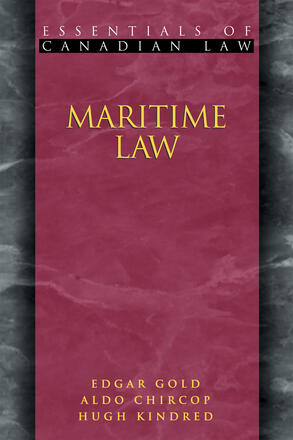
Maritime Law
La description
Authors Edgar Gold, Aldo Chircop, and Hugh Kindred have written the first general treatment of Canadian maritime law to be published since 1916. This comprehensive text covers the whole of modern shipping law, including admiralty jurisdiction and procedure; ownership and registration of ships; maritime mortgage and liens; insurance; carriage of goods and passengers; pilotage and towage; salvage and wreckage; environmental issues; and limitation of liablity.
The work provides insight into the Canadian experience and practice in this field and will appeal to legal practitioners, marine insurers, government officials, students and all others concerned with the regulation of the shipping and boating industries. It includes discussion of important differences between Canadian and US and UK maritime law.
For students and practitioners new to the field, the text explains the law surrounding the life of working vessels and pleasure craft in plain language and defines all technical legal and shipping terms as it proceeds. For experienced legal and other practitioners, it affords the means to analyse maritime situations, marine incidents, boating accidents, and other ship related events according to Canadian regulations and precedents, with due notice of their divergence from US and UK practice in this intensely internationalized area of law. In addition, original discussion of the unique Admiralty jurisdiction and procedure under the Federal Court of Canada is backed up by copious references to Canadian as well as comparative and international sources throughout the book.
The comprehensive lists of cases, statutes, and treaties provide an invaluable quick reference to the content and sources of Canadian maritime law.